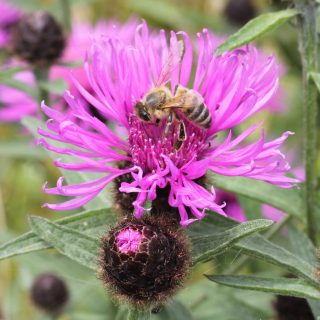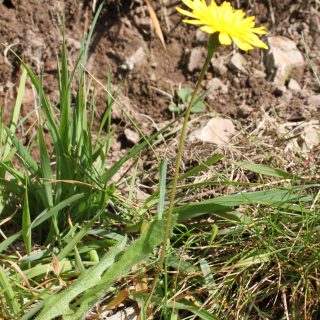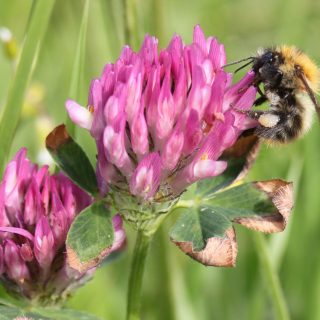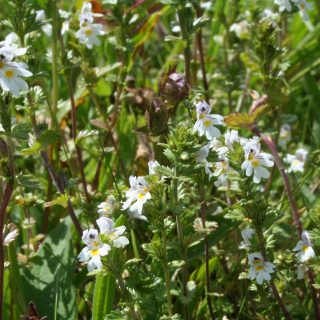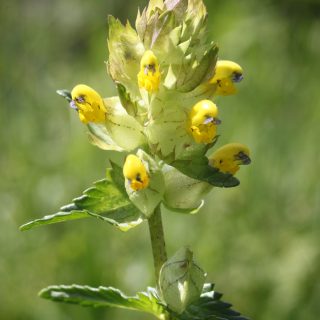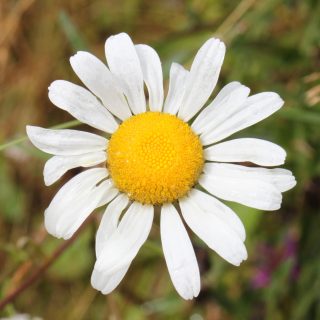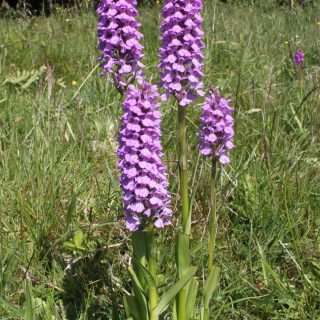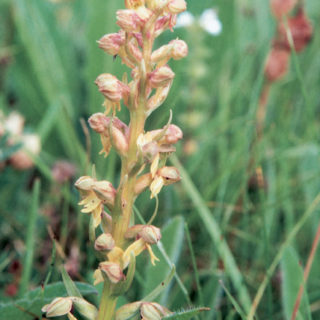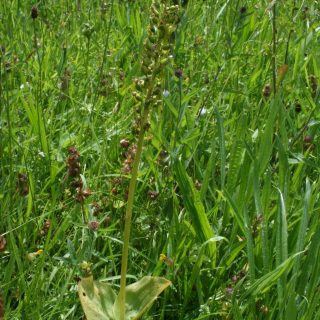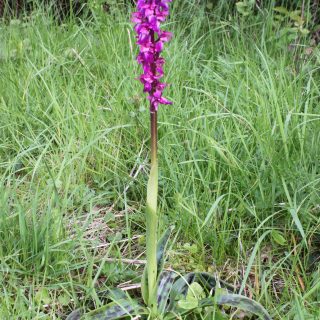A guide to the common and rare plants of meadows
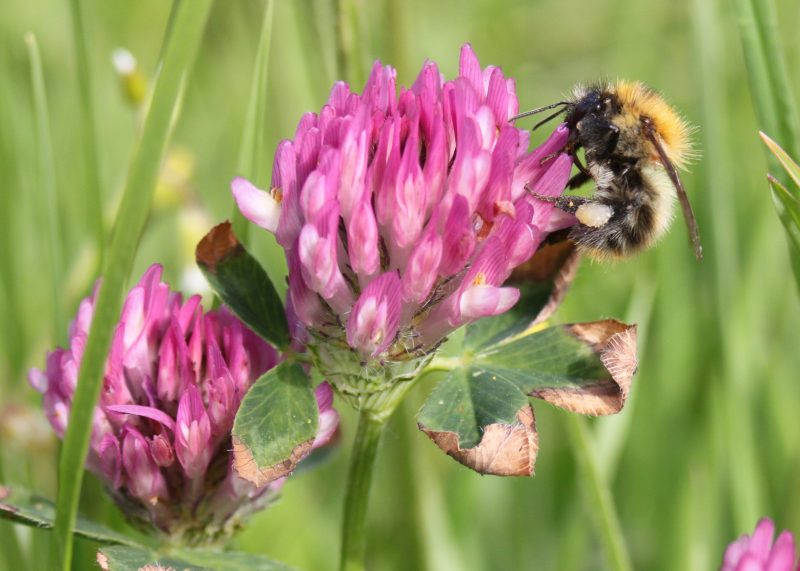
Walking through a summer meadow alive with colourful flowers and wildlife is a glorious experience. In the same way that our knowledge of the number and distribution of Dartmoor meadows is incomplete, we also undoubtedly still have much to find out about the wildlife that occurs within them. The following is a brief outline of some of the more common and characteristic species to be found, along with a few of the more unusual and interesting ones.
The descriptions relates to flower-rich, mainly dry meadows, whether they are managed as hay meadows or simply cut and/or grazed periodically. It does not include the much wetter, heathy sites which hold rhos pastures and on Dartmoor are largely restricted to the valley bottoms. However, many of the meadow communities described do have small springs or seepages which contain some of the wetland species more commonly associated with rhos pastures and a few of these will be mentioned.
Plant Communities
The plants which occur in Dartmoor meadows are determined by the underlying geology, which effects soil properties such as acidity and moisture levels, and past management which largely determine nutrient levels and seed availability.
The most commonly occurring community is loosely as lowland neutral grassland, with the most characteristic grasses being Sweet Vernal Grass, Crested Dog’s Tail, Common Bent, Red Fescue and Yorkshire Fog. Commonly occurring flowers include Black Knapweed, Bird’s-foot Trefoil, Common Sorrel, Meadow Buttercup, Ribwort Plantain and Common Cats-ear. Three sub-communities of this grassland type occur on Dartmoor, with the most widespread one being typically found towards the moorland fringe. Known as the ‘Heath Grass sub-community’, these meadows often include attractive displays of Heath-spotted Orchid, Greater Butterfly Orchid, Southern marsh Orchid, Tormentil, Black Knapweed, Eyebright, Rough Hawkbit, Pignut, Hay Rattle and Devil’s-bit Scabious.
On the more fertile, lower-lying meadows, the second most common community, referred to as the ‘typical sub-community’ usually occurs. Flowers such as Yellow Vetchling and Ox-eye Daisy along with an increased presence of Perennial Rye-grass are typical of this sub-community, but there is not always a clear distinction and a gradation between these two most common communities is often apparent.
The third and rarest sub-community of the lowland neutral grassland occurs in the more alkaline soils produced by the limestone outcrops on the eastern edge of the National Park at Buckfastleigh and Ashburton. It is referred to as the ‘Lady’s Bedstraw sub-community’ and contains characteristic flowers such as Salad Burnet, Lady’s Bedstraw and Pale Flax along with Yellow Oat Grass and Quaking Grass.
Of special interest on Dartmoor is the occurrence of a number of meadows containing small amounts of calcareous species such as Quaking Grass, Fairy Flax and Greater Knapweed, despite being on granite substrates in the middle of the Dartmoor. This maybe due in part to past efforts to improve soil fertility by the application of basic slag or lime. Also unusual is the presence around Princetown of haymeadows with some flowers of northern upland haymeadows including Lady’s Mantle, Pignut and Great Burnet, suggesting they may represent a southern upland equivalent.
Characteristic Plants
Present in most flowery meadows:
Locally common, especially in the higher altitude meadows:
Occurring typically where haymeadow management is carried out:
Usually sparse in higher altitude meadows, but widespread at lower levels:
The Orchids of Dartmoor Meadows
Common Spotted Orchid and Green-winged Orchids tend to be found only on fringes of the National Park, well off the granite.
Characteristic Wet Meadow Plants
The following are some of the more common plants which may be found in wet areas of meadows:
- Sharp-flowered Rush
- Soft Rush
- Carnation Sedge
- Lesser Spearwort
- Greater Bird’s-foot Trefoil
- Lesser Skullcap
- Devil’s-bit Scabious
- Ragged Robin
- Marsh Thistle
- Angelica
- Common Valerian
- Sneezewort
- Fleabane
- Water Mint
More Life in the Meadow help and information
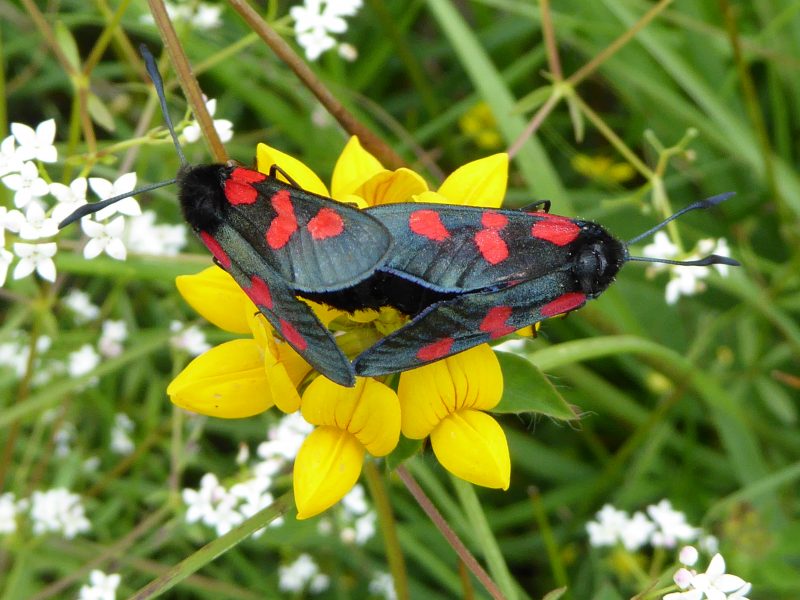
The Wildlife of Meadows
A diverse range of insects, from butterflies to bees and beetles, and other animals such as lizards, thrive in well-managed Dartmoor meadows. Find out about them here.



